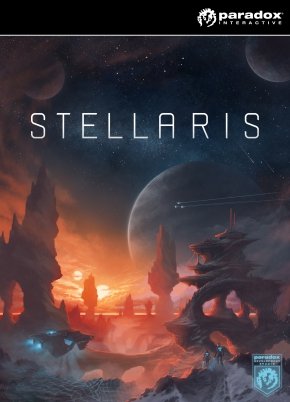Grand Strategy games have been around for awhile – a genre coined and perfected by Swedish developers Paradox Interactive. Previous Paradox titles dove headfirst into Medieval and World War history, and Stellaris finally takes us to the stars. Managing European provinces is trite compared to large-scale galactic conquest, allied federations, and playing god to lesser beings. Stellaris isn’t just Paradox’s most accessible title; it’s also the best space empire management game I’ve ever played.
The space empire of your dreams begins by selecting your choice of ethics. Ethics describes your people’s philosophy of life, from militaristic to religious to science-focused. Your ethics help determine your choice of government, as well as your relationships with your soon-to-be neighbours. You may rule by Divine Mandate, or shuffle through elected leaders every few years. Leaders provide different bonuses and age naturally as the timeline steadily progresses through months and years.
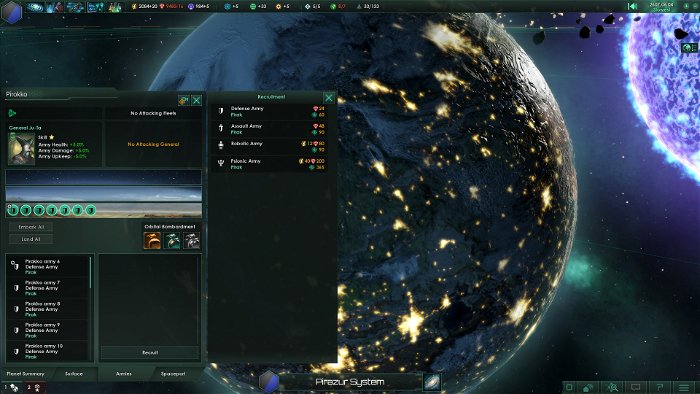
Stellaris plays out in real time, with a pause feature available to help sort through the chaos. There’s a steady drip feed of content that makes the gameplay smoothly addictive: Research new weapons and diplomatic options. Build up your custom-made fleet. Colonize a new world and fill it with tireless robots. Insult your neighbours. Bomb a planet. Watch with haughty amusement as a pre-space civilization nukes itself from existence.
There are only three resources to keep track of: energy, minerals, and influence. Minerals are used to build everything from buildings to starships. Energy is required to maintain all those things. Influence is the most precious resource. It’s used to expand your territory with outposts and acquire new leaders, who then fill out important roles as governors, admirals, and scientists. Influence can also be spent to enact policies and edicts that provide bonuses.
Like most strategy games, the early game is dominated by exploration. Science ships survey planets to find resources, potentially habitable colonies, and special anomalies. These anomalies range from one-time events to long quest chains. A helpful journal-like Situation Log helps keep track of quests and special projects.

The interface is the shiny ring that initially drew me into the complex world of space management. A tab called the Outliner keeps track of your planets, military fleets, civilian ships, factions, and observed worlds. This allows quick, easy access to all the important units under your command. Control groups can also be created for any combination of fleet or planet.
Once you begin expanding your empire it becomes nearly overwhelming to get everything done. Resource-generating buildings need to be constructed and later upgraded on the surface of colonized planets. Military ships need to be outfitted with the latest technology to deal with any wandering tentacled space whales or nosey neighbour. Construction ships extract resources with mines and research stations on valuable planets.
Stellaris‘ solution lies with Sectors. Each Empire can only control five planets before they begin incurring penalties (though you can add more with advanced technologies). To avoid the penalty and alleviate the work, you can carve out Sectors within your Empire.

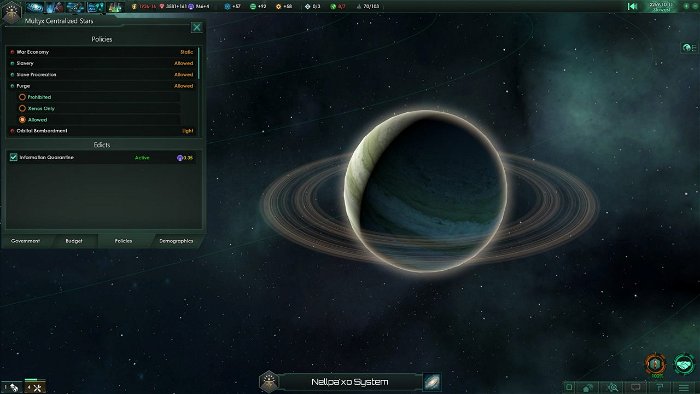
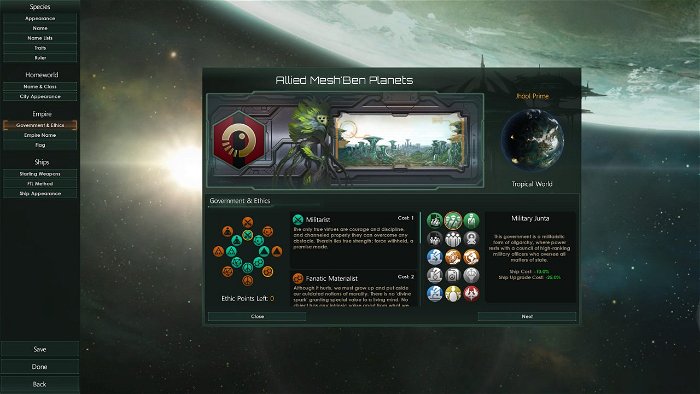
Sectors essentially give control of the territories to an AI. You can give them a focus (minerals, energy, etc) and determine what percentage of their resources they give you. You can create multiple Sectors within your empire, each with a different focus. It’s a brilliant solution and the AI is more than capable of meeting your needs. The one thing it won’t do is build its own ships.
For folks used to Galactic Civilizations‘ fully customizable ship builder, they may be disappointed with Stellaris’ more simplistic module system. Ship designs come in few models reflective of the type of race you picked, such as mammalian or avian. Instead of crafting ships piece by piece, you select which offensive and utility modules you want to add.
New technology adds new weapons and devices, such as long-range missiles or speedier thrusters. The bigger the ship the more weapons and armour you can attach. I appreciated selecting modules and outfitting my ships to completely designing them from scratch, but I would have enjoyed a few more aesthetic options.

Combat is a largely automated affair. Ships can be combined into a single fleet unit, which in the late game can easily encompass dozens of ships. A federation fleet can combine several allies’ fleets into a giant roaming death ball of lasery destruction. Attacking fleets or stations gives you a combat window that breaks down combat stats like accuracy and damage. Stellaris wants you to focus on running a full galactic empire, not worrying about an individual skirmish.
Paradox have come a long way visually. The galactic map looks fantastic, and the zoom is suitably impressive, though it bugged me that I had to click to enter/exit a star system. Ship combat looks great, with brightly coloured lasers firing across space and explosions signaling another loss. The visuals stumble a bit in the late game as vast armadas all clip through each other as they circle through their little dance of death. Planetary invasions are also largely abstracted, with armies depicted as simple little icons with health bars.
For all its intuitive controls Stellaris is still a dense game, and not without its frustrations. Managing a large war-mongering empire is a pain without proper rally points from starports, and merging fleets is an annoyingly arduous process. I would have appreciated a proper tutorial full of hand-holding to help ease me into the game as well. My background with space strategy games helped put me at ease, but newcomers to the genre are still in for a steady learning curve.
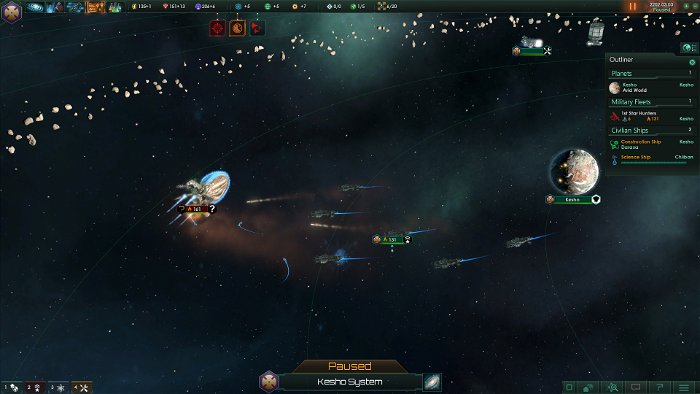
My favourite part of Stellaris are the emergent stories that arise. Like the time I uplifted my first race, and their initial act as part of the wider galactic universe was to send their very first star fighter to join my dozens currently engaged in an ongoing war. I was never more proud.
Or the time one of my observation crews was caught descending to a primitive planet and worshipped as a god, complete with pyramids. Needless to say, they were swiftly fired. Then there was the hubris I displayed reactivating an ancient alien device found on a newly colonized planet, only to have it awaken terrible beasts that devoured my colonists. Stellaris is not only my favourite Grand Strategy game, but easily the most fun I’ve had building a galactic empire and exploring the stars.

